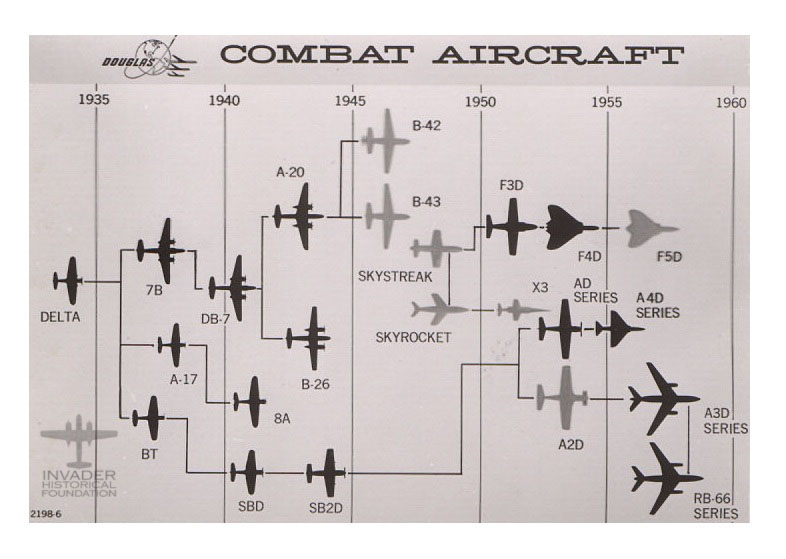Background
In the 1930s political tension in Europe caused many people to take notice of what was happening in an effort to try to guess at what would happen. Most people accurately predicted armed conflict as the inevitable conclusion, although few people would guess the scale of the war that was about to unfold. The shrewdest people began calculating and guessing what direction such a war might take, which weapons would be obsolete, and what might be needed.
Two noteworthy individuals in this later group were Jack Northrop and Ed Heinemann, who were quintessential designers for Douglas Aircraft Company. They began to speculate that in the coming war, the single-engine “Attack” type aircraft that the Army Air Corps currently used would be quickly obsolete. Collectively, they took a gamble and on their own began designing a new type of aircraft, the Model 7 – a twin-engine attack plane. In March 1937 the initial designs were ready under the Model 7A. In the fall, the Army finally caught up with the idea that a newer plane was needed and issued new requirements. Northrop and Heinemann began making revisions and produced the Model 7B, which became the A-20 Havoc.
Even as the A-20 was being rushed into production, many people were not content with the overall design and wanted something newer and more advanced. There was an idea that the Army wanted a more advanced plane than the A-20. Douglas engineer and artist R. G. Smith and Engineering Vice President Arthur Raymond began working unofficially on plans for the new plane while simultaneously Ed Heinemann paid a trip to Wright Field in the winter of 1940 to hear firsthand what the Army had in mind. With specific notes from the Army in hand, Ed looped in project engineer Robert Donovan and the team began designing a new aircraft.
While most sources generally state that the A-26 Invader was derived from the A-20, Douglas didn’t view it that way. It may have replaced the Havoc in function and been a successor in that regard, but according to Douglas’ own product line documents, the A-26 was inspired more by the original Model 7A rather than the eventual A-20.
Heinemann, Donovan, and the others at Douglas, wanted to exceed the capabilities of all of the light and medium bombers currently in production and set out to design what was the most advanced Attack plane of the era. This directive was further motivated by a letter to Douglas Aircraft from Maj. Frank O. Carroll, dated 5 Nov 1940. Carroll was the Chief of the Army Air Corps Experimental Engineering Section.
Maj. Carroll’s letter outlined 5 areas in which the current A-20 was lacking when “viewed in the light of the present war in Europe” and stated that these points must be corrected in any new bomber proposals to be considered.
First, and most serious to the Army, was a lack of interchangeability of the crew.
Second was a lack of defensive firepower. The Army wanted guns in turrets, preferably .50 caliber guns, and with more ammo than currently carried.
Third was a design that was rated to handle 6 Gs. The army wanted a light to medium bomber capable of doing dive bombing maneuvers, but none of the existing planes were rated to be able to handle the kind of G-force stress when pulling out of the dive.
Fourth was a plane that could land and take-off on a shorter runway. This would allow the planes to operate from smaller bases, closer to the front-line, which was a feature that the Army considered essential for close-support Attack aircraft.
Fifth, and final, was that the speed, while sufficient for the day, would have to be increased on new proposals in order to stay ahead of the enemy.
With these points, the bar was set high and the team at Douglas, led by Ed Heinemann, got to work on Development.
